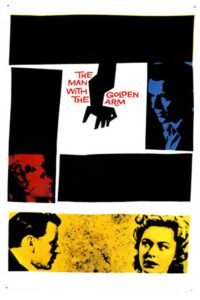It’s been said that Saul Bass’ work is “instrumental” to the graphic design and advertising world, and although punny, rings true to many designers and artists who pull inspiration from Saul’s prosperous career.
It’s safe to say that Saul was the man who altered the golden rules of design with his simple, yet out of the box thinking. He was a graphic designer that worked on thousands of ad campaigns, becoming an on-set visual consultant at the start of the 1950’s. During his 40-year career he worked for some of Hollywood’s greatest filmmakers, including Alfred Hitchcock, Stanley Kubrick, Otto Preminger, Billy Wilder and Martin Scorsese.
Born in 1920 in the Big Apple, Saul was always creatively inclined – his first plunge into art was with sketching and drawing. In college, he studied under György Kepes who was a master of the Bauhaus style of art.

In the 40’s, Bass moved from New York to California to work in advertising and graphic design. He designed some of the most iconic corporate logos in North America working as a freelance commercial artist for advertising agencies and companies, but my 1952 he started his own practice called Saul Bass & Associates.
An analysis of Bass’s corporate logos found them to have an unusual longevity. The average lifespan of a Bass logo is more than 34 years, and the most common reason for the end of a Bass corporate logo was the demise or merge of a company, rather than a logo redesign. See if you can recognize some of Saul’s famous logos below:







From left-right: Warner Communications (1972), United Way (1972), Girl Scouts (1978), A&T Bell System (1983), Kleenex (1980), Bell System (1969), Quaker (1971), Minolta (1978).
In 1954 he received his first commission from the director Otto Preminger to design the title sequence for his film “Carmen Jones”. That same year, Saul Bass designed the title sequence for Preminger’s “The Man with the Golden Arm” and from there, Saul’s work became a sensation, dubbing him the leading title and poster designer in Hollywood. Here are some of his famous poster designs:




From left-right: The Man With The Golden Arm (1955), Saint Joan (1957), Vertigo (1958), The Shining (1980)
Bass revolutionized the cleverness of movie posters with his minimalistic approach, and furthermore, transformed the role of title credits in films. Back in the 50’s, credits were uninteresting and static. Bass took movie credits to the next level by featuring his “kinetic type”, making credits animate and move across the TV screen with new life.
Before the Bass credit revolution, the credits were considered unimportant. They would be projected onto the closed curtains that traditionally opened with the first scene of the movie. Bass made credits a spectacle to be seen. Film reels with Bass credits were delivered to theaters everywhere with the note “Projectionist – pull curtain before credits roll”
One of Saul’s famous title sequences – North by NorthWest (1959)
From Logos to Film, Saul’s career was one that inspires many creative’s in their day to day endeavours. Bass knew how to leverage simplicity colours, basic shapes, and playful animations which created what people perceived as complex emotions. Saul was undoubtedly one of Cinema’s greatest craftsmen, ultimately asking us to think of things in a new light when we approach film and design.
